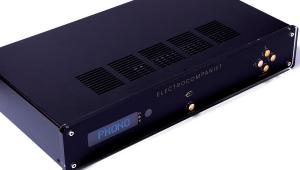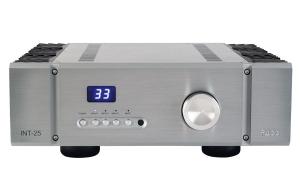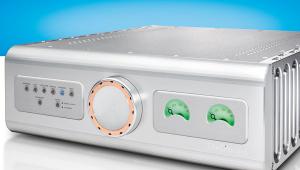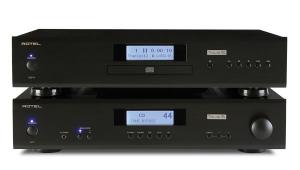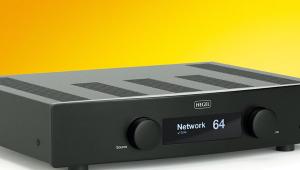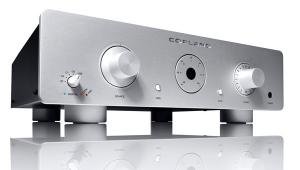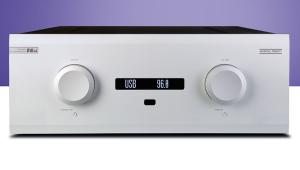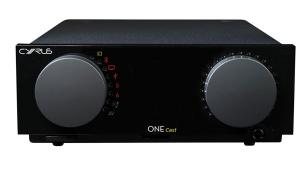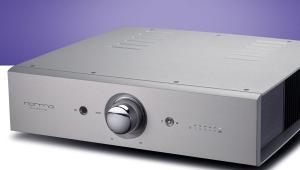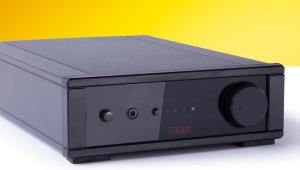Copland CSA150
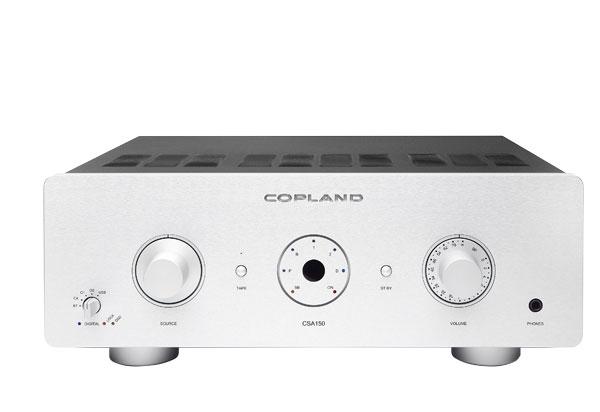
 There’s a lot to like about hybrids. In the past three decades I’ve tried valve, Class A solid-state, Class AB solid-state, and a combination of the first and last. Going totally thermionic is a big commitment because you have to pick your speakers carefully; they need to be efficient and/or generally horn or reflex loaded. If not, you can hearthe output transformers straining at higher volumes. And lovely as valves can sound, they can be high maintenance. In my experience, a valve preamp – or indeed a solid-state pre with valve buffering – plus a solid-state power amp is a good place to be. And it’s something that Copland has been doing since long before it became fashionable.
There’s a lot to like about hybrids. In the past three decades I’ve tried valve, Class A solid-state, Class AB solid-state, and a combination of the first and last. Going totally thermionic is a big commitment because you have to pick your speakers carefully; they need to be efficient and/or generally horn or reflex loaded. If not, you can hearthe output transformers straining at higher volumes. And lovely as valves can sound, they can be high maintenance. In my experience, a valve preamp – or indeed a solid-state pre with valve buffering – plus a solid-state power amp is a good place to be. And it’s something that Copland has been doing since long before it became fashionable.
Since the mid-Eighties, this Danish company has been going its own way. Founder Ole Møller is still overseeing the design and development of Copland amplifiers, and the CSA150 attempts to be a bit of everything. Inside, a single 6922 double triode acts as the voltage driver for the line stage, after which chunky MOSFETs take over to deliver a claimed 150W RMS per channel of Class AB power.
As well as touching both valve and solid-state bases, the CSA150 offers a bit of analogue and a bit of digital too. Inside is an ESS Sabre 9018 DAC working in quad mode mono configuration, which offers PCM decoding up to 32-bit/384kHz and DSD. It has standard optical and coaxial inputs, plus a USB in and aptX Bluetooth – although there’s no streaming functionality. You also get four analogue inputs, a moving-magnet phono stage, tape loop and a Bluetooth aerial socket. There’s a pair of balanced XLR inputs, plus fixed and variable RCA line outs. Up front is a full-size headphone jack that works with the built-in headphone amp.
The central circle of LED source indicators does the job, but doesn’t look beautiful. That’s a shame, because the volume and source selector knobs are works of art, with a silky smooth, precise action. Overall build quality is really good, with only high-end Marantz products feeling more luxurious at this price point. High-quality components are used throughout, such as the ALPS Blue Velvet volume potentiometer.
Sound quality
Pretty much from switch-on, the CSA150 is everything I want from an amplifier. It sounds big, powerful, clean and open, and is totally devoid of any conspicuous faults. Unlike some solely solid-state stuff I’ve heard, it doesn’t have any sense of grain or ‘chrome plating’ to its tonality; the Copland is buttery-smooth. However, in no way does this mean it’s soft, dull or lifeless – that couldn’t be further from the truth. Rather, it hits the sonic sweet spot and offers much of the best of both worlds.
Through my reference Yamaha NS-1000M loudspeakers – still among the most neutral speakers around – the CSA150 is ever so slightly on the sweet side of neutral. It would be wrong to call it tonally warm outright and it’s certainly not ‘valve-like’ in its character. Yet, as befitting its hybrid design, nor is it obviously transistor-y. Cue up a classic Seventies rock recording like Lido Shuffle by Boz Scaggs, and you’re instantly warped back to the characteristic studio sound of that time. It’s a little soft around the edges, with smidges of colour, but the recording is essentially quite dry. It sounded modern at that time, tighter and tauter than pop stuff coming out just a few years earlier. Showing its fundamental neutrality and transparency, the Copland reproduces this perfectly.
Along with its fine tonality, another instantly recognisable facet of this integrated is its power and punch. The CSA150 is made of stout stuff, with a barrel-chested feel to the way it goes about the job of making music. The bassline on the Boz Scaggs track is firm and solid yet wonderfully propulsive. It doesn’t have any obvious overhang, yet there is muscle aplenty. The same goes for some thumping techno from Manix; You Held My Hand absolutely blasts my room with vast tracts of sub bass.
The CSA150’s general demeanour of not being scared of hard work extends to its stereo imaging abilities. Lesser amplifiers make Kate Bush’s Running Up That Hill an underwhelming experience. Yet the Copland takes it on with all the confidence of a great stadium rock band, loving the chance to perform in the limelight. The percussive beat thunders out, underpinning a vast recorded acoustic. On some equipment this sounds dowdy and leaden, but here it was vast and visceral with images pushing far left and right, and there is decent depth perspective too.
Another really impressive aspect to this amplifier’s performance is its midband clarity and openness. That’s in no way to suggest that the CSA150 sounds analytical and forensic; it’s so much more than that. Give it a mediocre recording such as The Association’s Along Comes Mary, and it will tell you that it’s not perfect – yet it never dwells on this. Instead, it gets down to the job of diverting your attention from its relatively lo-fi origins. This song is warm, compressed, a little harsh on the vocals and lacks a really wide bandwidth. Yet the Copland doesn’t care. It clearly sets out all the aspects of the recording and lets them play along in a really spirited way together. Rather than zeroing in on the mediocre technical quality, it let the music’s energy and passion flood out.
In absolute terms, compared with cost-no-object designs, of course the CSA150 sounds a tad opaque in the midband, isn’t quite as three dimensional as it could be and doesn’t have the superb spatiality of the finest kit on sale. Yet the point is that it does so much so well that it’s hard not to be charmed, regardless of cost.
The CSA150’s analogue inputs are superb, and the RCAs are excellent too. The digital inputs are hugely convenient, but don’t quite do the rest of the amp justice; you’ll get an even better sound if you invest a couple of grand in a good standalone DAC. The built-in digital converter is classy and in no way a token gesture, but it can’t compete with my reference Chord Hugo TT2 (HFC 468). The Copland’s DAC lacks the depth perspective, midband delicacy and bass grip of the former. Still, it’s perfectly good and a major improvement on the sort of thing you’re likely to encounter in a £1,000 stream.
The built-in moving-magnet phono stage is better than expected. You’ll get more from a mid-price offboard phono stage, but I prefer its sound to the built-in DAC. It plays to the amp’s aforementioned strengths via its line-level analogue inputs – meaning it serves up an expansive, punchy and engaging sound.
An original vinyl pressing of AC/DC’s Back In Black is a riot, the Copland reproducing all that dramatic guitar riffery with a singular enthusiasm. It harnesses the recording’s great power and drama to create something that is suitably monumental.
Conclusion
I really rate Copland’s CSA150 integrated amplifier. It’s not just a fine all-rounder, it excels sonically with a big, strong, engaging and musical performance that’s also surprisingly subtle and detailed for such a muscular thing. Well worth an audition, it’s a bargain at its price considering all that it does. DP
DETAILS
Product:Copland CSA150
Type: Integrated amplifier
FEATURES
● Quoted output power: 2x 150W RMS (8ohm)
● 6922 double triode line stage voltage driver
● ESS Sabre 9018 DAC
● Moving-magnet phono stage
 |
Inside this month's issue:
Ruark R610 music system and Sabre-R standmount speakers, PMC twenty.23i Active, floorstanders, English Acoustics Downton preamplifier, Bluesound NODE ICON preamp/streamer, Ortofon Concorde Music Blue MM cartridge and much, much more
|






